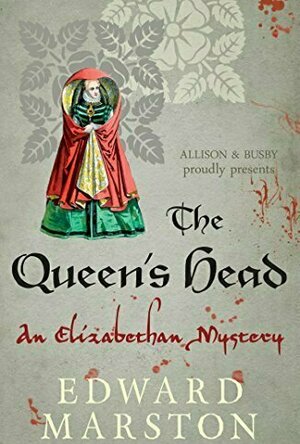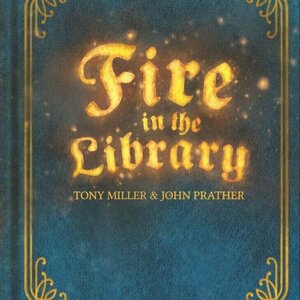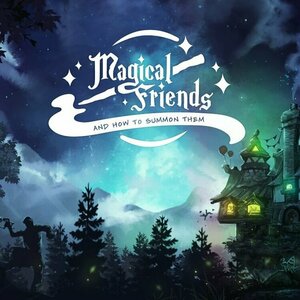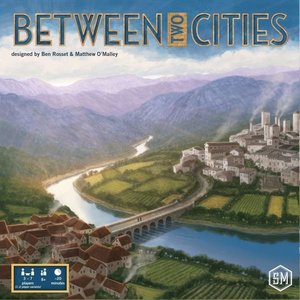
Between Two Cities
Tabletop Game
It is the early 1800s, a time of immense construction and urbanization. You are a world-renowned...
BoardGames 6playergames StonemeierGames 2015Games
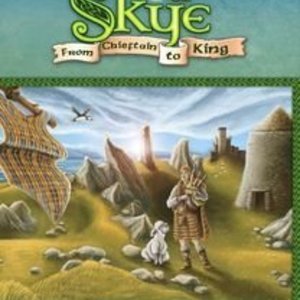
Isle of Skye: From Chieftain to King
Tabletop Game
Isle of Skye is one of the most beautiful places in the world, with soft sand beaches, gently...
BoardGames IrishGames TileLayingGames
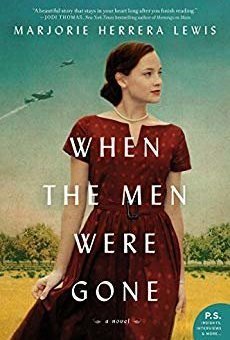
When the Men Were Gone
Book
A cross between Friday Night Lights and The Atomic City Girls, When The Men Were Gone is a debut...
WWII WW2 World War 2 World War II football Texas
Lyndsey Gollogly (2893 KP) rated The Queen's Head (Nicholas Bracewell, #1) in Books
Sep 9, 2021
Book
The Queens Head ( Nicolas Bracewell book 1)
By Edward Marston
Once read a review will be written via Smashbomb and link posted in comments
1587, and Mary, Queen of Scots, dies by the executioner's axe, her head, shorn of its auburn wig, rolling across the platform. Will her death end the ceaseless plotting against Mary's red-haired cousin, Elizabeth?1588, the year of the Spanish Armada, is a time of more terror and triumph, not just for queen and court but for the whole of England. The turmoil is reflected in its theatres and under the galleries of inns like London's The Queen's Head where Lord Westfield's Men perform. The scene there on grows even more tumultuous when one of the actors is murdered by a mysterious stranger during a brawl.Nicholas Bracewell, the company's bookholder, a role far wider than mere producer, faces two immediate repercussions. The first is to secure a replacement acceptable to its temperamental star -- and chief shareholder -- Lawrence Firethorn. The second is to keep his promise to the dying Will Fowler and catch his killer.Soon further robberies, accidents, and misfortunes strike Lord Westfield's Men even as their stage successes swell. Bracewell begins to suspect a conspiracy, not a single murderous act, but where lies the proof? Then the players are rewarded with the ultimate accolade -- an appearance at court -- and the canny bookholder senses the end to the drama is at hand....
It was good not something I’d come back to reading again but good enough to take me to book 2. I love this era and found the descriptions one of the best parts of the book. I did have it sussed from just after the murder though.
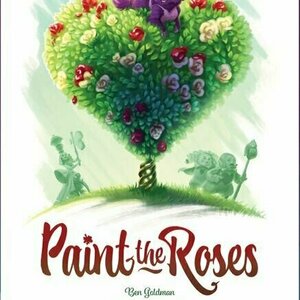
Paint the Roses
Tabletop Game
Paint the Roses is a 2-5 player cooperative logic deduction game that automatically adapts to your...
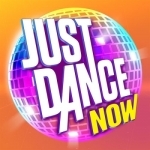
Just Dance Now
Games
App
Unleash your inner Dancer with Just Dance Now! Enjoy Just Dance's greatest choreographies without...
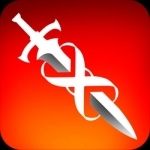
Infinity Blade
Games and Entertainment
App
Winner of the 2011 Apple Design Award, and more than 20 “Game of the Year” & “Top App”...
Purple Phoenix Games (2266 KP) rated Fire in the Library in Tabletop Games
Feb 11, 2020
Fire in the Library is a push-your-luck card game that rewards players for pushing their luck well beyond their comfort zones… but as with all push-your-luck games, defeat is also imminent.
DISCLAIMER: We were provided a copy of this game for the purposes of this review. This is a retail copy of the game, so what you see in these photos is exactly what would be received in your box. I do not intend to cover every single rule included in the rulebook, but will describe the overall game flow and major rule set so that our readers may get a sense of how the game plays. For more in depth rules, you may purchase a copy online or from your FLGS. -T
To setup, each player will choose a player color, place their Libreeple (I think it’s Libreeple anyway) near the scoring track, and take the corresponding Player Reference Card. The Library will next be built from sequential Library Cards. The Library is a group of individual decks of cards arranged in a 2×2 pattern, and the card fronts create a lovely picture of the Library. Add all cubes of five different colors to the Library Bag (keeping aside 10 red “fire” cubes). Shuffle the Tool Cards deck, deal each player two Tool Cards, place the top three Tool Cards face-up next to its deck to form the Tool Card Market. Shuffle the Turn Order Cards per the player count rules in the rulebook, deal one to each player, and the game can begin!
Phase One of the game is Choosing Turn Order. Once the turn order has been established (just for the first round – after that, the player who is in last place will choose which Turn Order Card they would like to use for the round) the 1st Player will move onto Phase Two. Yes, Choosing Turn Order is an entire phase by itself. This becomes more important once I explain Tool Cards a little later.
Phase Two is the meat of the game. It is split into two sections, but they flow so nicely into each other. The active player consults their Turn Order Card to understand how many book cubes they would like to pull from the bag, thus “saving” them from the impending fire. The Turn Order Cards will have blank square spaces for “safe” areas, and spaces with fire icons in “risky” spaces. More points can be scored by placing cubes into the risky spaces, but also is more dangerous. You see, a player can pull out a red fire cube from the bag and still choose to continue to pull cubes, assuming the red cube is placed on a safe space on their card. But pull a second fire cube and their turn is immediately over. However, pulling just one red cube and having to place it in a risky space ends the turn immediately. A player can choose to stop pulling cubes at any time and earn the rewards on the Turn Order Card printed directly below the last cube placed as well as the points for each book saved, which are the large numbers printed on the Library Cards (the 2×2 grid with the picture of the Library). These rewards from the Turn Order Card could be merely a Tool Card (under safe spaces), or it could result in points on the scoreboard (under risky spaces). Even if a player busts with the red cubes, they will be able to take a Tool Card as consolation. If the active player did not bust and voluntarily stopped pulling cubes, they add their points for the turn and adjust their Libreeple accordingly. On the other hand, if a player had to end their turn due to pulling red fire cubes, then the fire spreads!
When the Fire Spreads all the books that the active player had thought they saved are burned (returned to the bag). These lost books will also cause the fire to burn down portions of the Library that match the colors of the cubes pulled. Remove the top cards for each of these cubes from the Library. Sometimes this will reveal a printed fire icon on the revealed Library cards. Every time a fire icon is revealed in this way, one of the red cubes that was set aside at setup will be added to the Library Bag – thus increasing the ratio of fire to safe books in the bag.
Phase Three is called “After Scoring.” Every Tool Card in the deck will have an icon printed to show when it can be played during a turn (check the Reference Card). The Tool Cards can be played during Choosing Turn Order, Saving Books, Fire Spreading, and After Scoring.
Once all players have had their turn for the round, a portion of the Library will burn. Remove the appropriate card (according to the rulebook). All players will have a chance to discard one of their Tool Cards and replace it with a Tool Card from the top of the deck. When complete, a new round begins. Play continues in this fashion until a section of the Library is revealed with an icon signifying the end of the game. Players will have one last round to earn as many points as— I mean, save as many books as they can.
Components. There’s a lot going on in this game, and the components are really really good. First, the game box is one of those awesome magnetic boxes (like Biblios) that unfolds and reveals the score tracker. The Libreeples are normal meeple fare, the cubes are normal cube fare, and the Library Bag is one that is loved by Guy Fieri (probably). The cards are great quality and feature really amazing artwork by Katie Khau and Beth Sobel. Overall, the components are wonderful and we really enjoyed playing with them.
As you can tell from our score, we genuinely enjoyed this game. The push-your-luck mechanic is so central to the game and the Tool Cards help to mitigate frustrating pulls, or help to manipulate other areas of the game, and we love both of those aspects. All in all, Fire in the Library is a truly enjoyable experience, and one that I find myself thinking about outside of game night. I cannot wait to play again, and hopefully save more books. I would suggest adding this to my workplace library’s board game collection, but I don’t want any students getting any great ideas… Purple Phoenix Games gives this one a hot hot hot 15 / 18. Check it out for a different take on push-your-luck, where you actually care about what you’re doing. Oh, and of course I won – I work in a college library.
Purple Phoenix Games (2266 KP) rated Magical Friends and How to Summon Them in Tabletop Games
Sep 29, 2021
Disclaimer: We were provided with a prototype copy of this game for the purposes of this preview. The components pictured are not finalized, and could change after a successful Kickstarter campaign. I do not intend to rehash the entire rulebook, but rather provide a general overview of the rules and gameplay. For more information, head to the Magical Friends website. -L
Magical Friends and How to Summon Them (referred to as just Magical Friends from hereon out) is a strategic game of card drafting and variable turn order in which players take on the roles of mages attempting to summon the most magical creatures to the local tavern in order to win the Midsummer festival competition. Played over 8 rounds, players will take turns summoning creatures, moving them towards the tavern, using special creature abilities, and occasionally fighting off your opponents’ creatures. The player who gets the most creatures to the tavern by the end of the 8th round is the winner! To setup for the game, lay out the main board and summoning board in the center of the table. Take the 4 double-sided map tiles, randomly choose a side, and place them in their corresponding places on the main board. Shuffle the Summoning cards and reveal a number of cards, determined by player count, to create a market row and preview row. Each player receives a player mat, heart tokens, and Artifact Cards in their chosen color. Place the round marker on Round 1 of the main board, select a player to get the starting player token, and the game is ready to begin!
To start a round, first you will need to determine turn order. Each player has an identical deck of 11 Artifact Cards, numbered 1-11. The player who offers the most powerful (highest number) Artifact gets to act first in the round. The player with the starting player token chooses their card first, and places it face-up on their player mat. The next player, in clockwise order, will do the same. Here’s the catch though – once a number has been played, it cannot be played by anyone else for this round! So say I put choose my value 8 card – no other player may choose that card for this round. Once all players have chosen their Artifacts, determine the turn order for the round. The player with the highest valued Artifact goes first, then the next highest, and so on.
Once the turn order has been determined, it is time for players to take their turns! On your turn, the first thing you will do is to select a Summoning card from the Summoning board and take it into their tableau. The selected card tells you which friend (creature) you have summoned, and tells you how many moves/what types of movement you may take this round. After choosing your Summoning card, you will take any/all of the following actions: Summon a friend (bring its standee into play), use basic movement (as determined by your new friend), use bonus movement (from other cards), or use the abilities of any friends in your tableau. You may perform as many of these actions as you want and are able to perform. It is important to note that each friend may only use one basic movement and one bonus movement per round. So you can’t just move a single friend with every movement available in one turn.
Once you are finished performing actions, you will end your turn. Refresh the Summoning board by shifting cards down and refilling any empty creature slots. Play then moves to the player with the next highest valued Artifact card. When all players have taken their turn, the round ends. Move the Round marker up one spot, and pass the starting player token to the next clockwise player. A new round will then start with the turn order determination, beginning with the new starting player. After 8 rounds of play, the winner is crowned. Players score points for the number of their friends who reached the tavern, and the player with the highest score wins!
I’ll come right out and say that I really have enjoyed Magical Friends. There are lots of elements that I like and that work well together to create a fun, strategic, and engaging game. First, turn order determination. I love that the turn order isn’t set for the entire game, because that could really be a detriment to whomever would be last every round. Being able to ‘bid’ for turn order, in a sense, allows players to be proactive (or conversely, reactive) with their strategy. And after you’ve used an Artifact card in a round, it is discarded and cannot be used for the rest of the game. So you need to decide when it’s worth it to play your high value cards to hopefully act first, or if you’re willing to risk playing a mid-value card that might be out-bid by an opponent.
The other awesome strategic element are the friends in the game. Each friend is a different creature with different movement options and special abilities during gameplay. An important thing to note is that although every friend has a printed movement value on its card, you may only ever use that value on the round in which you summon that friend. So a Griffin, for example, lets you move 3 friends 2 spaces, which you may do when you first summon the Griffin. But in future rounds, the Griffin will only move based on the movements provided by the most newly acquired friend. Maybe you don’t necessarily want to summon a Mermaid, but the movement she offers is exactly what you need to get some friends to the tavern for scoring. It’s all a neat mix of strategy that you are changing with every turn. Along with the movements, each friend has a special ability that can be used on your turns. Some abilities allow you to move extra spaces, move opponents, or even slay creatures. When you slay a creature, you collect its heart token for endgame scoring, and the player who controlled that creature gets a Pity Power card (which provide bonus movement). You need to decide when to move which friends, and in what order to trigger your abilities. You must always be paying attention to the board layout and your opponents’ turns as they will help you determine your strategy for future turns.
Components. As I mentioned earlier, this is a prototype version of the game, but with that said, the components are pretty nice! The cards are sturdy, the text is clear, and the artwork is fun to look at. The main game board and summoning boards are colorful, and the creature standees are nicely sized for the board. I do have to say that I really like the heart tokens used to identify to whom each creature belongs on the board. The hearts slide over top of the standee and create a base of sorts to color-code every creature on the board. Just a neat little use of components that make the gameplay smooth. And how about the insert? It’s awesome! The standees are all stored, assembled, in a slotted inlay that allows for quick selection of creatures. I hope that’s something that makes it to final production because it really helps streamline the gameplay. Some of the wording in the rulebook could use some clarification, but I know that it is still a work in progress and continues to undergo edits. The only negative I would have to say is that 2 of the player colors are black and gray – and they are sometimes difficult to differentiate between. But changing one color should be an easy fix!
All in all, I was pleasantly surprised by Magical Friends. At first glance, I thought it would be a pretty simple ‘roll-and-move’ type game, but it proved to be much more strategic and engaging than I initially thought. The variable turn order, the movement rules/restrictions, and the unique friend abilities all work together to create a cohesive, thematic, and strategic game. I very much am looking forward to following the progress of Magical Friends and How to Summon Them on Kickstarter, and I encourage you to check it out as well!

Dr. Panda Home
Education and Games
App
Wake up and get ready! There are lots of things to do in Dr. Panda Home!! With over 20 different...
